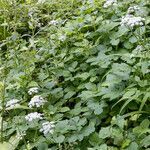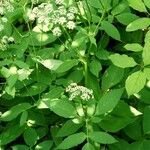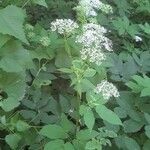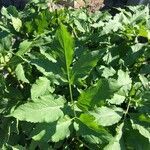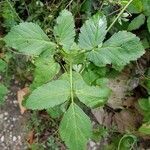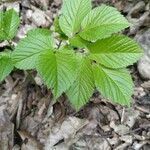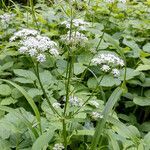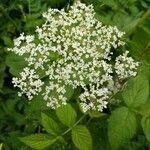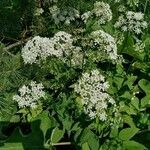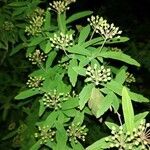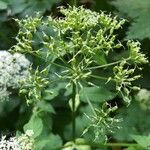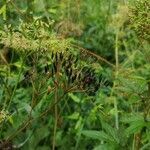Erect, branched, 4-10 dm; lower lvs long-petiolate, mostly biternate with 9 lfls but often irregular; lfls oblong to ovate, 3-8 mm, sharply serrate; upper lvs reduced, short-petiolate, chiefly once ternate; umbels dense, 6-12 cm wide, the 15-25 rays subequal; fr 3-4 mm; 2n=22, 44. Native of Eurasia, cult. in old-fashioned gardens and often escaped in ne. U.S., especially in moist, partly shaded places. Most horticultural forms have white-margined lvs.
